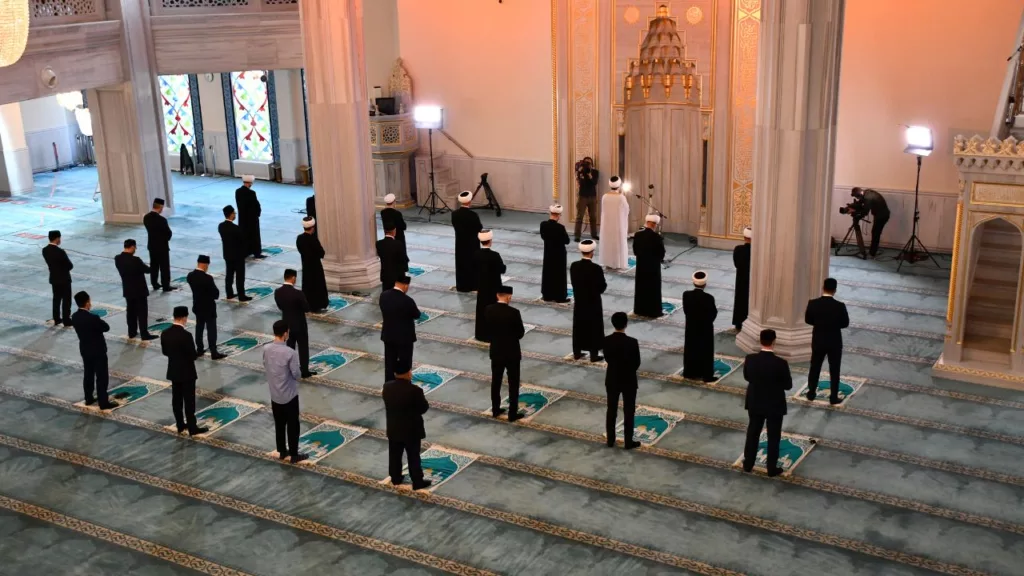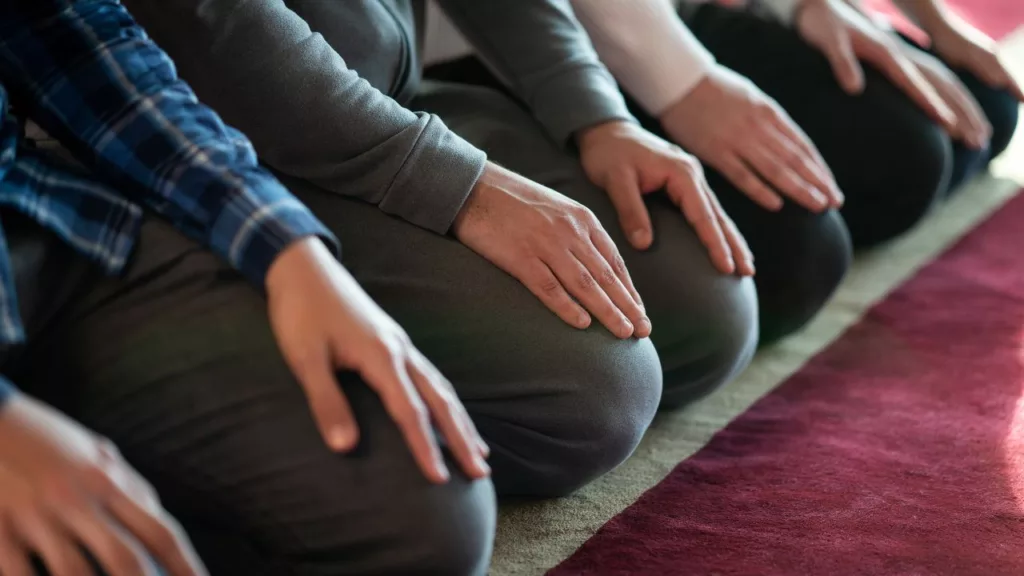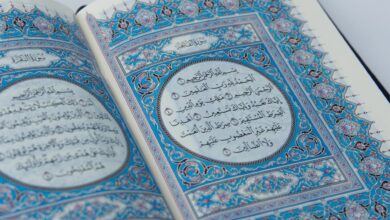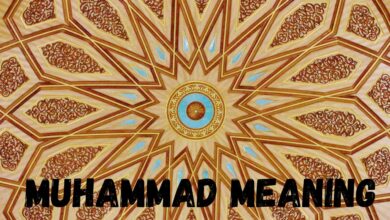
Namaz-e-Janaza
Namaz-e-Janaza is a vital funeral prayer in Islam, offered for deceased Muslims. It involves four takbeers (raising of hands and saying “Allahu Akbar”) with recitations and supplications. The prayer is a way to seek forgiveness for the departed soul and demonstrate unity within the Muslim community in times of grief.

Introduction:
Namaz-e-Janaza, often simply referred to as Janaza prayer, is a crucial and deeply meaningful ritual in Islam. It is the funeral prayer offered for deceased Muslims, and it holds great significance in the Islamic faith. In this article, we will explore Namaz-e-Janaza, its importance, the steps involved, and the significance it holds for Muslims.
- Future of Islam | Navigating the Bright | 2023
- Social Justice in Islam – Full Guide 2023
- Muslim Prayer Times
The Significance of Namaz-e-Janaza:
Namaz-e-Janaza is considered one of the most important acts of worship in Islam. It is not only a way to bid farewell to the deceased but also an opportunity for the living to seek forgiveness for the departed soul and pray for their peaceful journey into the afterlife. The act of performing Janaza prayer demonstrates the unity and solidarity of the Muslim community in times of grief.

Preparing for Namaz-e-Janaza:
- Purification: Before offering Namaz-e-Janaza, it’s essential to ensure that both the deceased and those offering the prayer are in a state of ritual purity. This means performing wudu (ablution) or ghusl (full-body purification) if necessary.
- Position of the Body: The deceased should be placed in front of the congregation in a way that the deceased’s head is on the right side when facing the qiblah (the direction of the Kaaba in Mecca).
The Steps of Namaz-e-Janaza:
Namaz-e-Janaza consists of four takbeers (raising of the hands to the ears, saying “Allahu Akbar”) and various supplications. Here is a simplified step-by-step guide:
- First Takbeer: After the congregation is ready, the Imam (prayer leader) says the first Takbeer, and everyone follows. During this takbeer, you silently recite Surah Al-Fatiha.
- Second Takbeer: After the first takbeer, the second takbeer is made, and you silently recite Durood (blessings upon the Prophet Muhammad) and make a general supplication for the deceased.
- Third Takbeer: The third takbeer follows, and you offer a specific prayer for the forgiveness of the deceased. You can also make personal supplications at this point.
- Fourth Takbeer: The final takbeer is made, and you conclude the prayer by offering Salam (peace) to the right and left sides, ending the Janaza prayer.
Conclusion:
Namaz-e-Janaza is a solemn and meaningful ritual in Islam, serving as a final farewell to a departed soul. It signifies the unity of the Muslim community in times of loss and the hope for Allah’s mercy and forgiveness for the deceased. Understanding the steps and significance of Namaz-e-Janaza allows individuals to participate in this important act of worship with reverence and respect for the departed soul.
FAQs – Namaz-e-Janaza
What is Namaz-e-Janaza?
Namaz-e-Janaza, also known as the Janaza prayer, is a funeral prayer performed by Muslims for deceased individuals. It is a crucial religious ritual in Islam.
Why is Namaz-e-Janaza Important?
Namaz-e-Janaza is important because it serves as a final farewell to the deceased and a means to seek forgiveness for their soul. It is also a way for the Muslim community to show solidarity in times of grief.
Who Can Perform Namaz-e-Janaza?
Any adult Muslim, male or female, can perform Namaz-e-Janaza. It is typically led by an Imam or prayer leader, but others can also join in offering the prayer.
When Should Namaz-e-Janaza Be Performed?
Namaz-e-Janaza should be performed as soon as possible after the death of a Muslim. It is preferable to conduct it before the burial, but it can be offered later as well.
How Many Takbeers are There in Namaz-e-Janaza?
Namaz-e-Janaza consists of four takbeers, or the raising of hands while saying “Allahu Akbar.” Each takbeer is associated with specific recitations and supplications.
Can Women Attend Namaz-e-Janaza?
Yes, women can attend and participate in Namaz-e-Janaza. In some cultures, they may choose to do so from a separate area for modesty, but it is not a strict requirement.
What Surahs Are Recited During Namaz-e-Janaza?
During Namaz-e-Janaza, Surah Al-Fatiha is recited silently in the first takbeer, while Surah Al-Ikhlas is recited in the second takbeer.
Can Personal Supplications Be Made During Namaz-e-Janaza?
Yes, during the third takbeer, after the specific prayer for forgiveness of the deceased, individuals can make personal supplications for the deceased and themselves.
Is Namaz-e-Janaza Performed Differently for Men and Women?
The basic structure of Namaz-e-Janaza is the same for both men and women. However, in some cultures, there may be variations in how it is performed, but these variations are not a part of Islamic law.
What is the Purpose of Namaz-e-Janaza?
The primary purpose of Namaz-e-Janaza is to seek forgiveness and mercy for the deceased, offer prayers for their peaceful transition to the afterlife, and show respect and solidarity within the Muslim community during times of loss.





